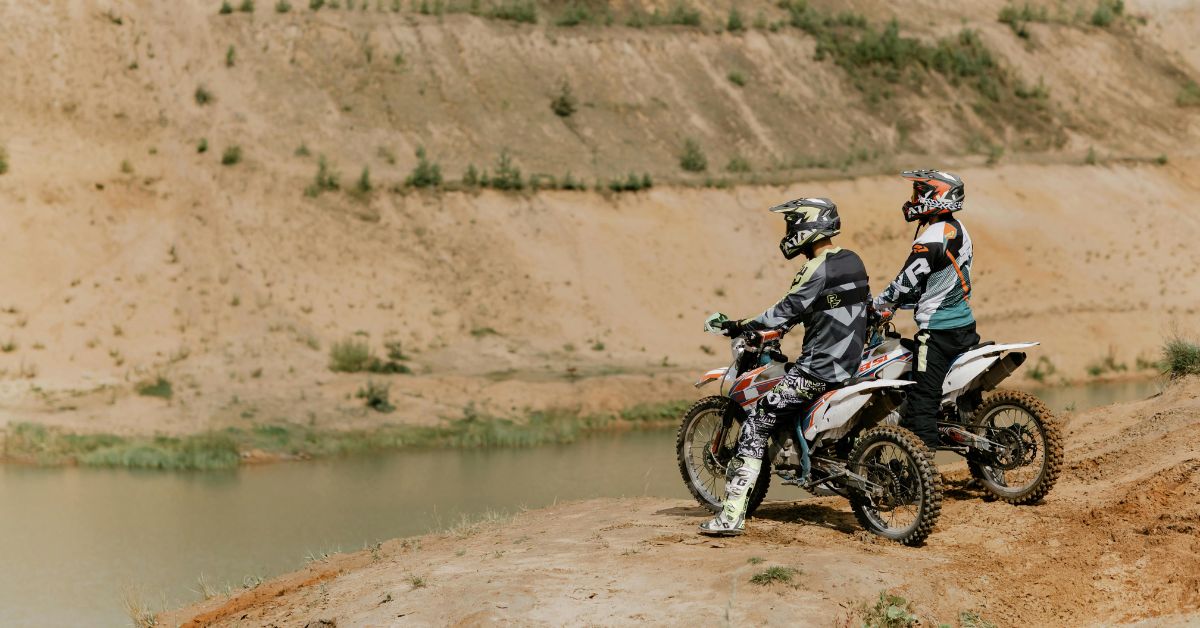Feeling confused about how to choose motorcycle boots for beginners?
As a new rider, you may feel overwhelmed by the variety of motorcycle boots on the market. You may wonder what is actually protective versus just fashionable? Should you get racing boots, touring boots, or something else entirely?
The good news is that knowing a few basics about motorcycle boots streamlines this purchase in no time.
Although I don’t currently own a pair of motorcycle boots, I am planning to purchase my first pair in the near future. My husband and I are planning a six month Europe tour, and I would like to be well equipped (hello Autobahn!). Because of my upcoming trip, I have done extensive online research and review of motorcycle boots. I thought I would share my knowledge and help other beginner riders to make the right purchase.
Therefore, in this guide, we’ll walk through how to choose motorcycle boots for beginners. We’ll review everything from safety features and styles, to sizing, climate considerations and budget. If you’re a new rider and building your gear setup, this guide is the place to start.
Keeping reading to find out why motorcycle boots matter so much in the first place, and which ones are right for you.
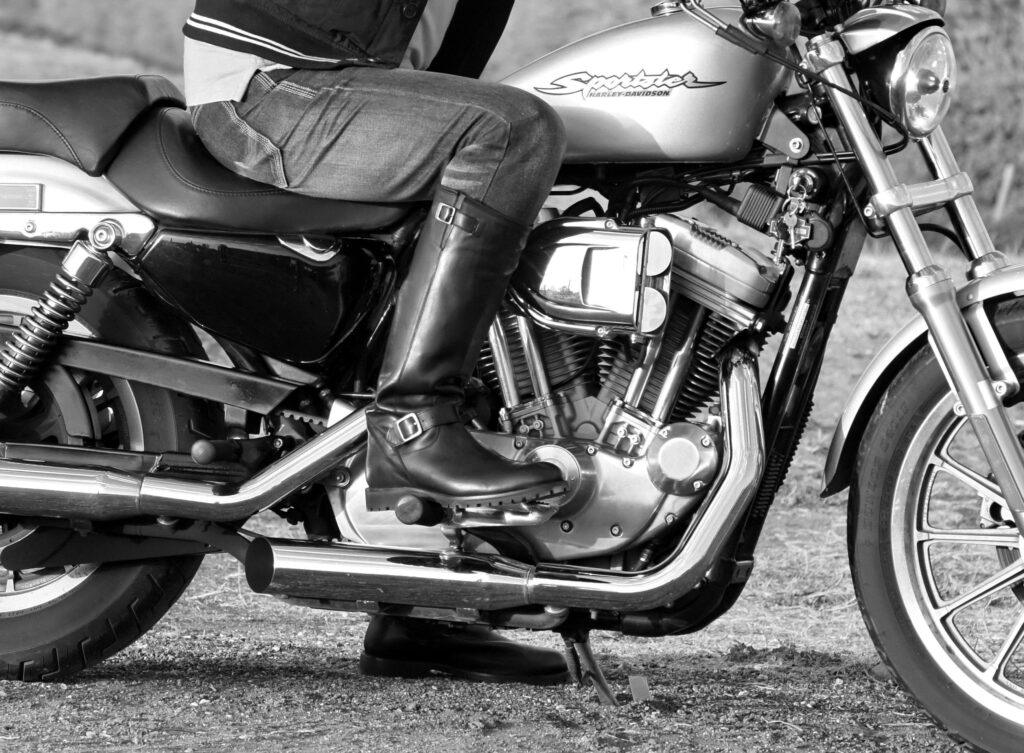
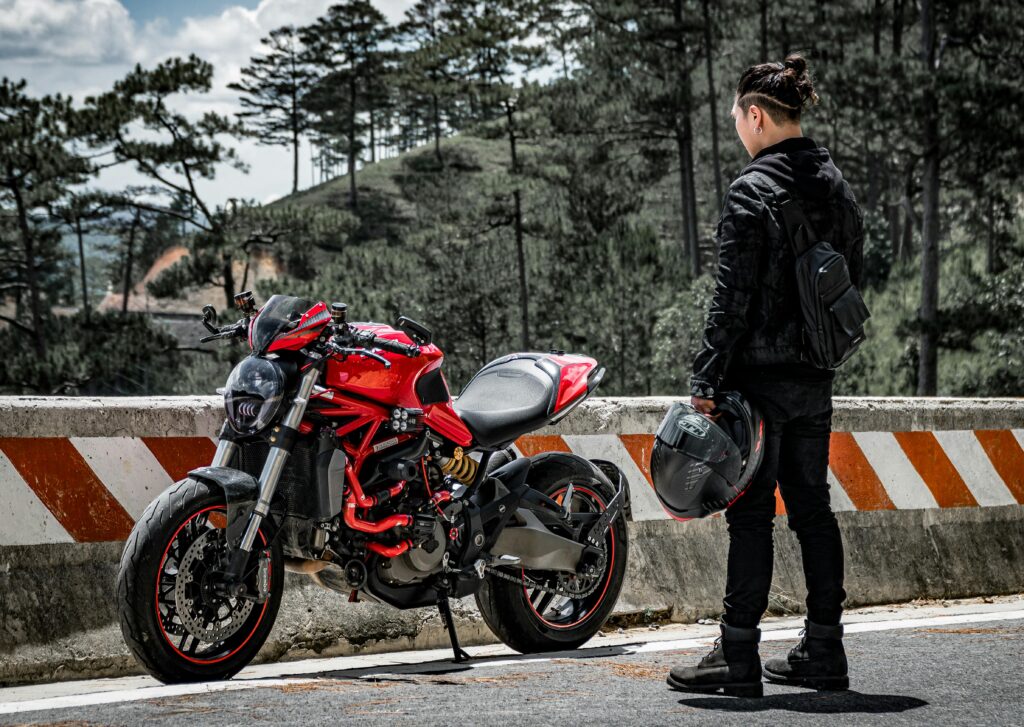
How to Choose Motorcycle Boots for Beginners: Why It Matters?
Choosing the right motorcycle boots isn’t just about aesthetics—it’s a foundational decision that affects your safety, control, and riding comfort. A study by the Center for Disease Control and Prevention (CDC) looking at emergency room data from 2001 to 2008 found that 30% of non-fatal injuries involved the rider’s feet and legs. These findings underscore how important protective gear for the lower body is.
The benefits of using proper motorcycle boots instead of regular footwear are:
- Extended protection: Motorcycle boots provide specific protection that ordinary footwear lacks, such as reinforced ankle and shin support
- Reduction in injury: New riders are more likely to experience slow-speed drops and unexpected conditions
- Improve function: Proper boots improve grip on the foot pegs and the ground, enhancing stability at stops.
- Rider longevity: Starting with safe, purpose-built gear builds good riding habits from the beginning.
If you’re serious about motorcycling, you need to be serious about protecting your feet and ankles. The right boots give you the confidence and security you need as you learn.
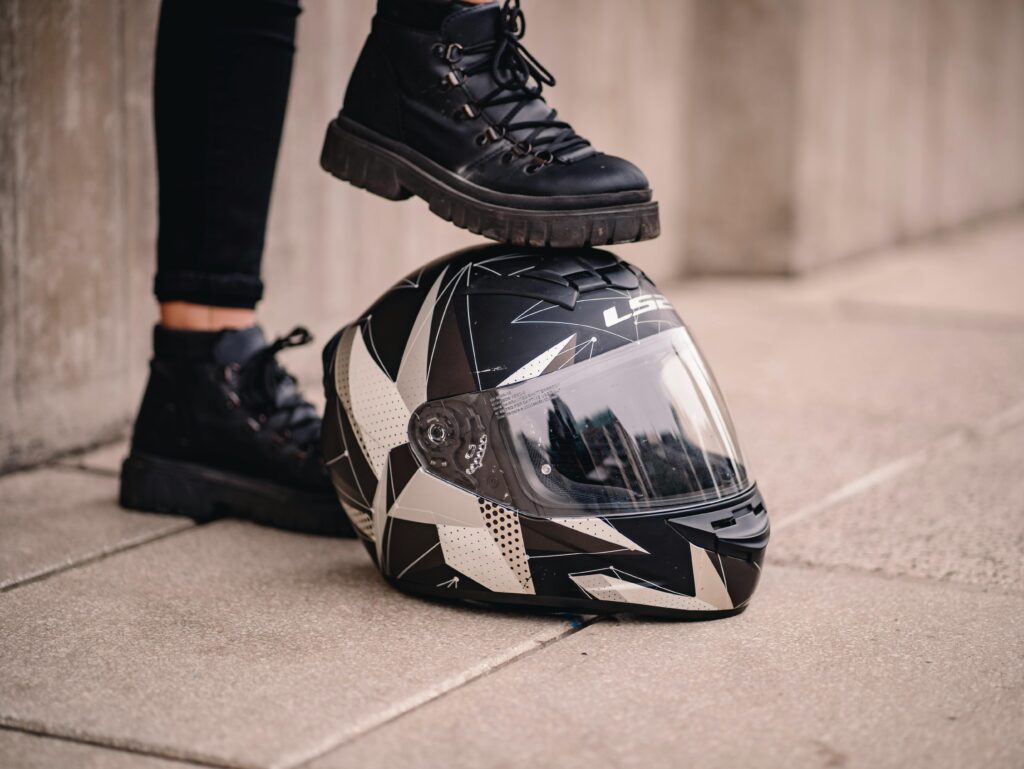
Types of Motorcycle Boots for Beginners
There’s no single boot that fits every rider, but understanding the categories can help narrow your options.
- Street Boots: Designed for urban riding and short commutes, often low-cut and more casual in appearance. Best for beginners who ride in the city.
- Touring Boots: Great for comfort over long distances. Typically waterproof, flexible, and packed with comfort-focused features.
- Adventure/Dual-Sport Boots: Built for mixed terrain—off-road and street—with rugged construction and more rigid protection.
- Racing Boots: High-performance, heavily armored, and often overkill for beginners, unless you’re track-bound.
- Cruiser Boots: Durable and stylish, cruiser boots prioritize long-lasting materials and a classic aesthetic.
If you’re unsure where to start, a mid-height touring boot offers a balance of comfort, safety, and versatility for most new riders.
Pro Tip: The right type of boot depends on your style of riding. City riders have different needs than long-distance tourers or dirt trail adventurers. Always take the time to consider what your riding style is i.e. commute vs weekend only, season, weather etc. Buy only what you really need to prevent getting something you won’t want to wear.

Key Safety Features for Motorcycle Boots
Safety should always be your top concern when selecting motorcycle boots. But what exactly should you look for?
- Ankle Protection: One of the most important features. Reinforced ankle cups or armor protect this fragile joint.
- Toe and Heel Reinforcement: Helps guard against crush injuries and gives structure to the boot.
- Abrasion-Resistant Materials: Full-grain leather, thermoplastic polyurethane (TPU), and Kevlar are durable choices.
- Shifter Pad: A reinforced patch on top of the boot where the shift lever hits. Prevents wear and adds control.
- Anti-Slip Sole: Oil-resistant rubber soles give traction at stoplights, even in rain or oil-slicked intersections.
- CE Certification: Look for CE-rated boots (EN 13634). This ensures the boot has passed European safety standards.
You’re not just buying footwear—you’re buying protection. Even an entry-level boot with solid armour is better than regular hiking shoes or sneakers.
Pro Tip: Although I would recommend always wearing your motorcycle boots, sometimes this may not be practical. You can buy a gear shift pad to use with boots or other shoes when you don’t have your motorcycle boots available, e.g. day trips around Italy. My husband brings one everywhere we go, and he only needed to ruin one good pair of leather loafers to do so.
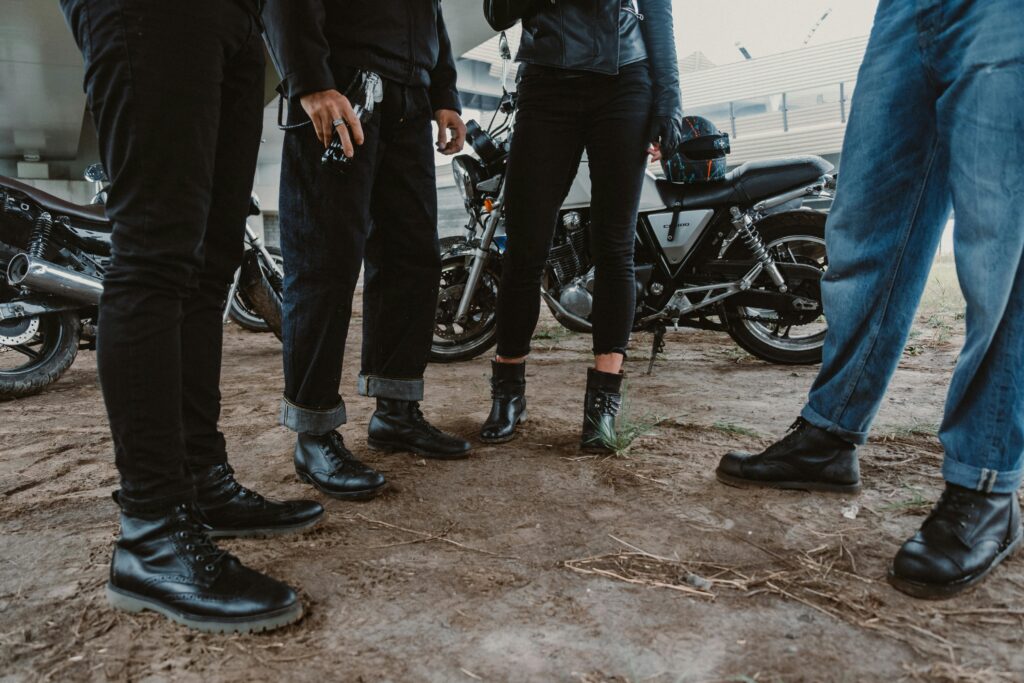
Fit and Comfort: Getting It Right from the Start
Comfort is a dealbreaker. No matter how protective a boot is, if it doesn’t fit right, you won’t want to wear it—and that puts you at risk.
- Try boots on with riding socks to ensure an accurate fit.
- Boots should feel snug but not tight, with wiggle room for your toes and no heel lift when you walk.
- Check for pressure points. Even small discomforts can turn painful over a long ride.
- Consider the break-in period. High-quality boots may feel stiff at first but will soften after 10–20 hours of riding.
- Look for comfort features like breathable linings, flex panels, and cushioned footbeds.
Your boots should feel like an extension of your body. Prioritise fit now to avoid fatigue and discomfort later.
Pro Tip: This applies to all motorcycle gear in general. If you are considering buying gear for multi-day touring, or even an overseas trip, make sure you try out everything at home. Being stuck with an ill-fitting helmet, too-tight gloves and boots that cut your circulation is best investigated on home soil.
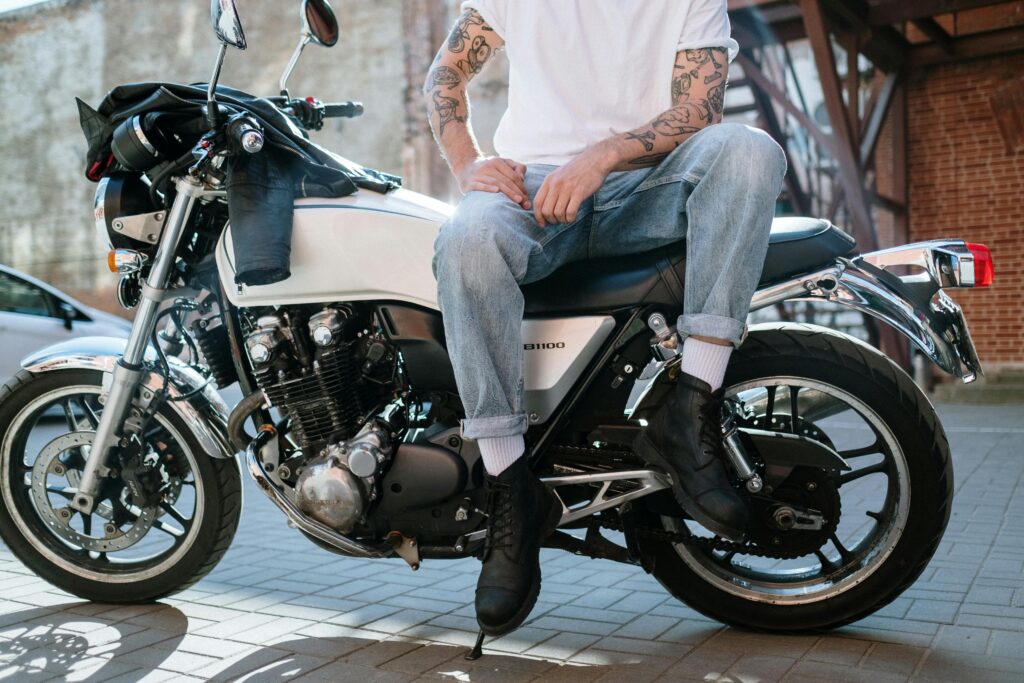
Choosing Boots for Climate and Riding Style
Your boots should match where, and how you ride. Riding conditions vary dramatically by location and season, and choosing the wrong type of boot for your environment can affect both comfort and safety.
- Wet climates: waterproof boots (like Gore-Tex lined) are essential, especially in commuters and touring riders who can’t always avoid rain.
- Hot weather riding: choose boots with ventilated mesh panels, perforated leather or cool linings to promote airflow.
- Cold conditions: insulated boots or those with thermal liners will keep your feet warm.
- Adventure riding: boots for off-road and rough terrain offer reinforced protection, grippy soles, waterproof construction and may have additional shin protection.
- Commuting and urban environments: city riders benefit from hybrid boots with a more flexible sole, discreet styling and oil-resistant grip for walking on slick pavement.
Your boots should work with your environment—not against it. While some all-season boots can handle multiple conditions, it’s often smarter and safer to invest in gear tailored to your specific climate and riding style.
Pro Tip: Always note how other experienced riders approach their motorcycle gear and somewhat adapt yourself the average. For example, how often do you see motorcyclists on a high-speed highway wearing a t-shirt? 99% of the time they are in full gear. Alternatively, how many motorcyclists in Bali wear full gear for zipping along rice paddies at 5km/h? People wear things for a reason, so be vigilant in your observations and act accordingly.

Budgeting for Your First Pair of Motorcycle Boots
Wondering how much to spend? There’s good news: you don’t need to break the bank to get solid protection. Motorcycle boots come in a wide range of price points, and many entry-level options offer great value for money—especially when you know what to look for.
- Budget range ($100–$150): Decent protection, though expect fewer features and simpler construction. These boots may lack weatherproofing and could show wear sooner with regular use.
- Mid-range ($150–$300): Excellent balance of quality, safety, and comfort. Often includes waterproofing, reinforced armour, and better ventilation—ideal for most beginners planning to ride frequently.
- High-end ($300+): Premium materials, advanced protection, and rider-focused features. These boots are designed for long-term durability and all-day comfort on extended trips or in demanding conditions.
Avoid used boots unless you can inspect them in person. Internal wear, broken buckles, or sole degradation aren’t always visible online and can compromise safety.
When budgeting for gear, your top priorities should be having a solid helmet, jacket, gloves and boots. Investing just a little more in these items often leads to gear that lasts longer, fits better, and keeps you safer on every ride.
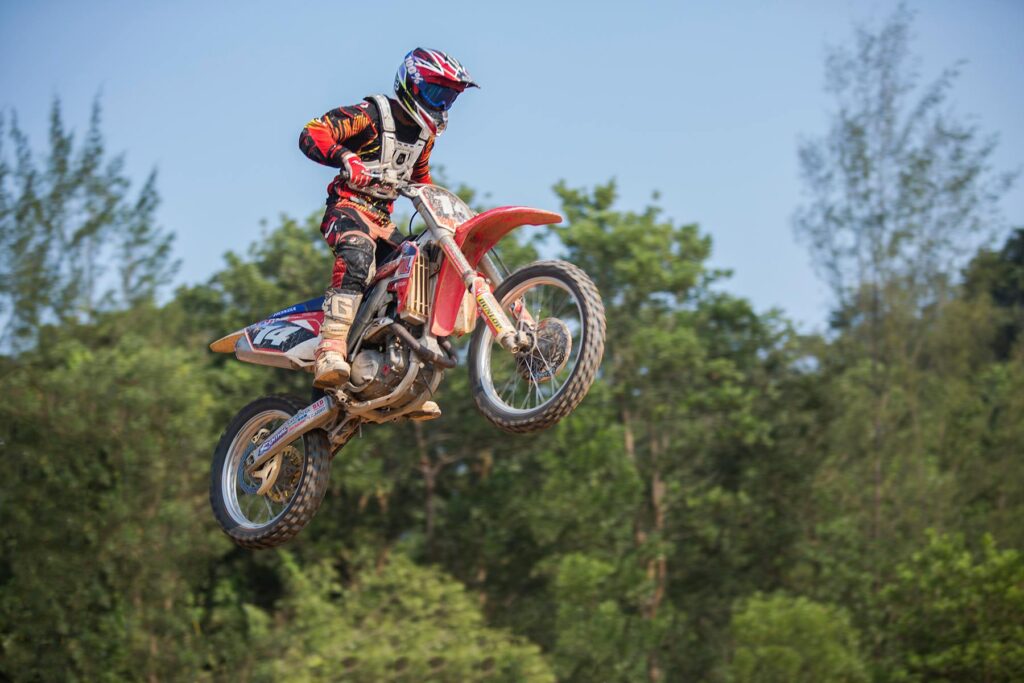
Where to Buy Motorcycle Boots (and What to Watch For)
When it’s time to buy, don’t just jump on the first Amazon listing. Choose a trusted retailer, online or in-store, that offers solid return policies and customer support.
- In-store purchases let you try on multiple sizes and feel how they fit your feet and ankles.
- Online retailers often offer wider selections, but be sure to check return terms in case the fit is off.
- Ask questions: What’s the break-in period? Are they waterproof? What certifications do they carry?
- Read rider reviews. They’ll give insight into durability, comfort over long rides, and sizing accuracy.
Your boots are a long-term investment. Whether you buy online or in-person, make sure you have the option to return or exchange them if the fit or features aren’t right.
Pro-Tip: For your first piece of gear, whether it be a helmet, jacket or boots, I strongly recommend purchasing it in store. As a beginner motorcyclist, you most likely don’t know how something is meant to fit. In addition, no blog can accurately describe what true field experience gives. Best not to find out during an accident. Online shopping is always there once you know what you are buying.

Avoiding Common Beginner Mistakes
Even with all the right info, new riders often make predictable mistakes when buying boots. When considering how to choose motorcycle boots for beginners, take note of the following:
- Choosing by looks alone: Function always comes before fashion.
- Buying casual boots thinking they’re “close enough”—they aren’t.
- Ignoring CE ratings or safety features
- Buying boots that are too stiff or too flexible
- Neglecting long-term comfort—a major mistake for touring riders
Small errors in gear choice can lead to big regrets. Start smart, and your boots will be an asset—not a liability.
Pro Tip: Like I mentioned previously, a common beginner mistake in purchasing motorcycle gear is gaining all your information online. Whilst I have written my articles to be as detailed, yet concise as possible, my blog could never replace professional in-person advice. Why not consult us both? 🙂
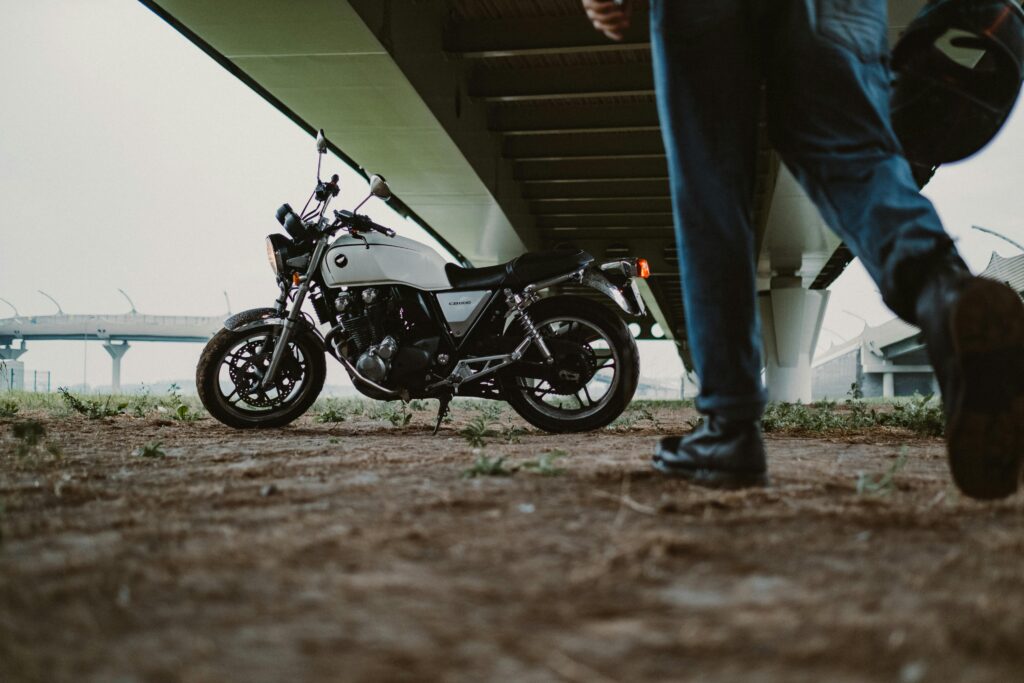
FAQ: How to Choose Motorcycle Boots for Beginners
Q. Can I wear regular hiking boots for motorcycle riding?
No, they are not recommended. Hiking boots don’t offer the same ankle, toe, or abrasion protection as motorcycle-specific boots. Stick to purpose-built gear.
Q. Are short motorcycle boots safe for beginners?
Short boots can be safe if they include proper armour and construction, but full-height boots generally offer better protection for new riders.
Q. How often should I replace motorcycle boots?
Quality boots can last 2–5 years with regular use. Replace them if the sole wears thin, armour cracks, or water resistance fails.
Q. Should I waterproof my motorcycle boots myself?
If your boots aren’t already waterproof, consider using a waterproofing spray or wax—especially if you ride in wet conditions frequently.
Q. Can motorcycle boots be resoled?
Some high-end boots can be resoled. Check with the manufacturer or a specialty cobbler to see if yours are eligible.

Final Thoughts
How to choose motorcycle boots for beginners doesn’t have to be overwhelming. By focusing on safety, fit, climate, and your budget, you’ll be well on your way to finding boots that protect and perform. Quality boots are an essential part of your gear setup—just like gloves or jackets—so invest wisely and ride confidently.
Looking for more beginner gear advice? Check out our motorcycle gear guide for beginners, how to choose motorcycle gloves for beginners, and how to choose a motorcycle jacket for women to complete your setup.
Do you think motorcycle boots are important for beginners? Let me know in the comments!

